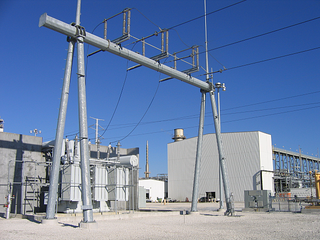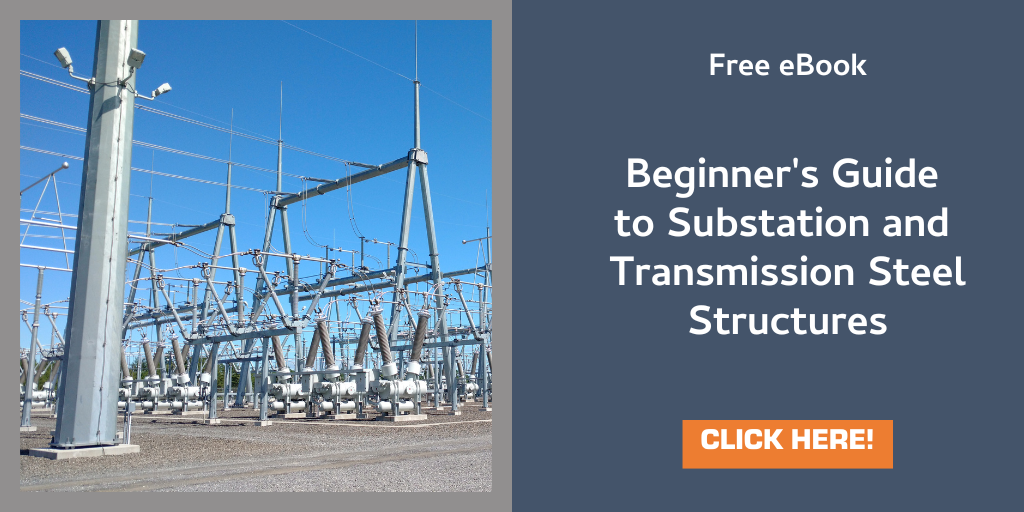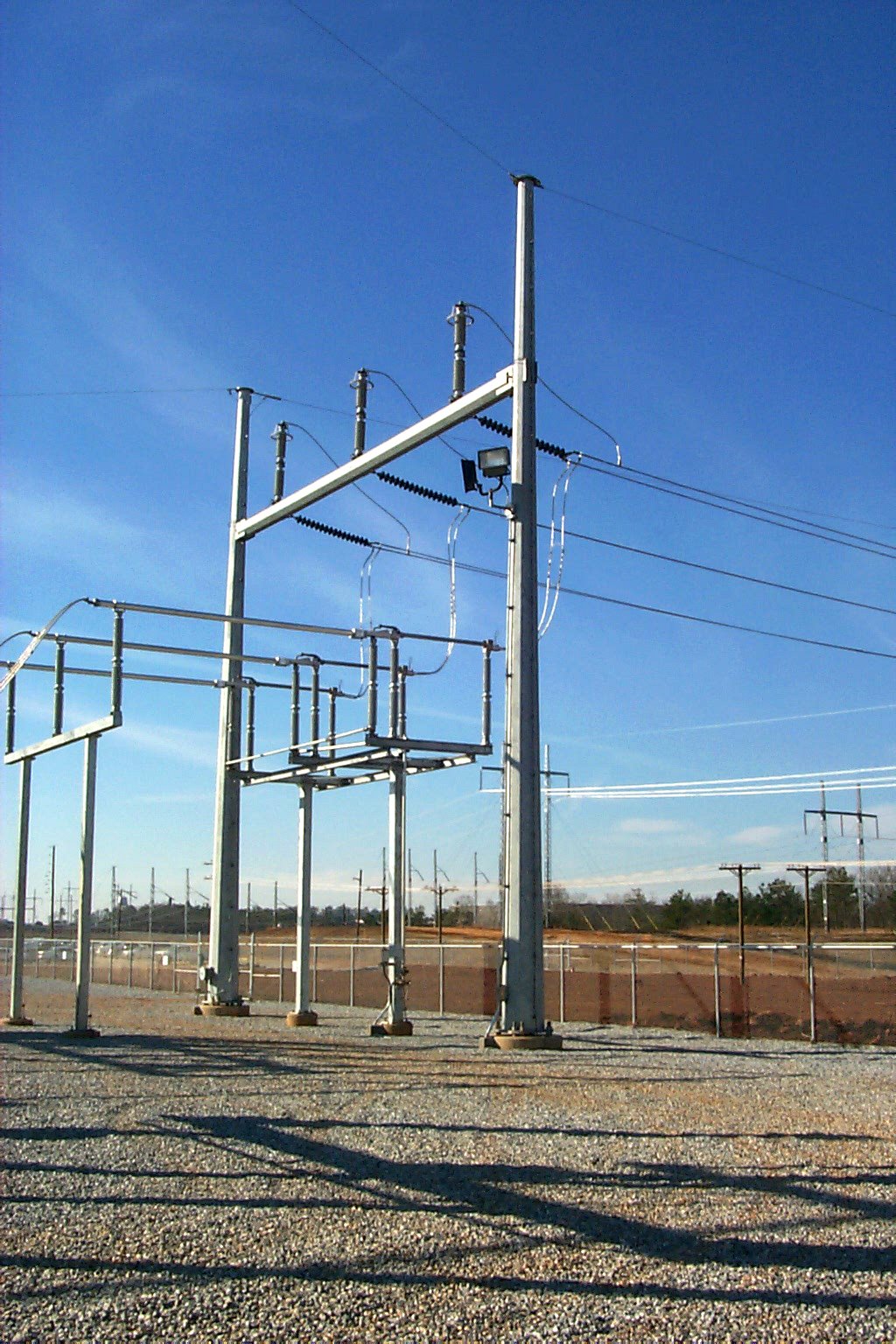Before electricity can travel into your home, it must pass through a substation first. A substation is an assemblage of equipment where electrical energy is passed in order to be stepped up or stepped down.
Transformers inside a substation change the voltage levels between high transmission voltages and lower distribution voltages. The high transmission voltages are used to carry electricity longer distances, like across the country, whereas lower distribution voltages travel to industrial, commercial or residential consumers.
In a T&D system, the major components typically consist of transmission lines, distribution lines, substations and switchyards.
1.) Dead-End Structures
2.) Static Poles
3.) Bus Supports/ Equipment Stands
Dead-end Structures are where the line ends or angles off. They are typically constructed with heavier steel in case they are needed to carry heavier tension. The two most common dead-end structures are H-Frame and A-Frame structures.


Static Pole, is a single, free-standing pole that creates a shield to protect all of the equipment inside a substation from lightning. Static poles may or may not have overhead shield wires attached to enhance protection. It depends on the size of the substation as to how many static poles are needed.
NOTE: Tapered tubular design is typically efficient and economical in dead-end and static pole situations when compared to AISC standard shape structures.
Bus Supports are the most basic structure found inside a substation. Its main purpose is to provide support for rigid bus as it travels through the substation. Rigid bus is stiff and will not move around during weather events. Unlike rigid, flexible bus is typically used in high seismic areas in order to be able to move and dampen the seismic forces that occur.
Examples of some equipment stands include:t can be of significant weight and must meet specific guidelines for structural loads, deflection limits or clearance requirements. Equipment Stands are the structures that the actual equipment sits on.
- Potential Transformers (PT) Stands
- Current Transformers (CT) Stands
- Coupling Capacitor Voltage Transformer (CCVT ) Stands
- Lightning Arresters (LA)
- Switch Stands
When it comes to which type of steel is used, galvanized or weathering, inside a substation, I won’t say that you will never see weathering steel, but it is very rare. Weathering steel is used more in transmission structures than substation. One of the main reasons is because aesthetically, galvanized steel “looks” better inside a substation. Typically a substation is surrounded by a fence, has a metal building inside as well as white rock on the ground surrounding it. So the look of weathering steel, which is usually a dark brown color, aesthetically, goes better with a transmission line running through the woods to blend in versus in a substation.
If you found this information to be helpful, subscribe to our blog to get notified when new posts are made so you can stay up to date with the newest information.

